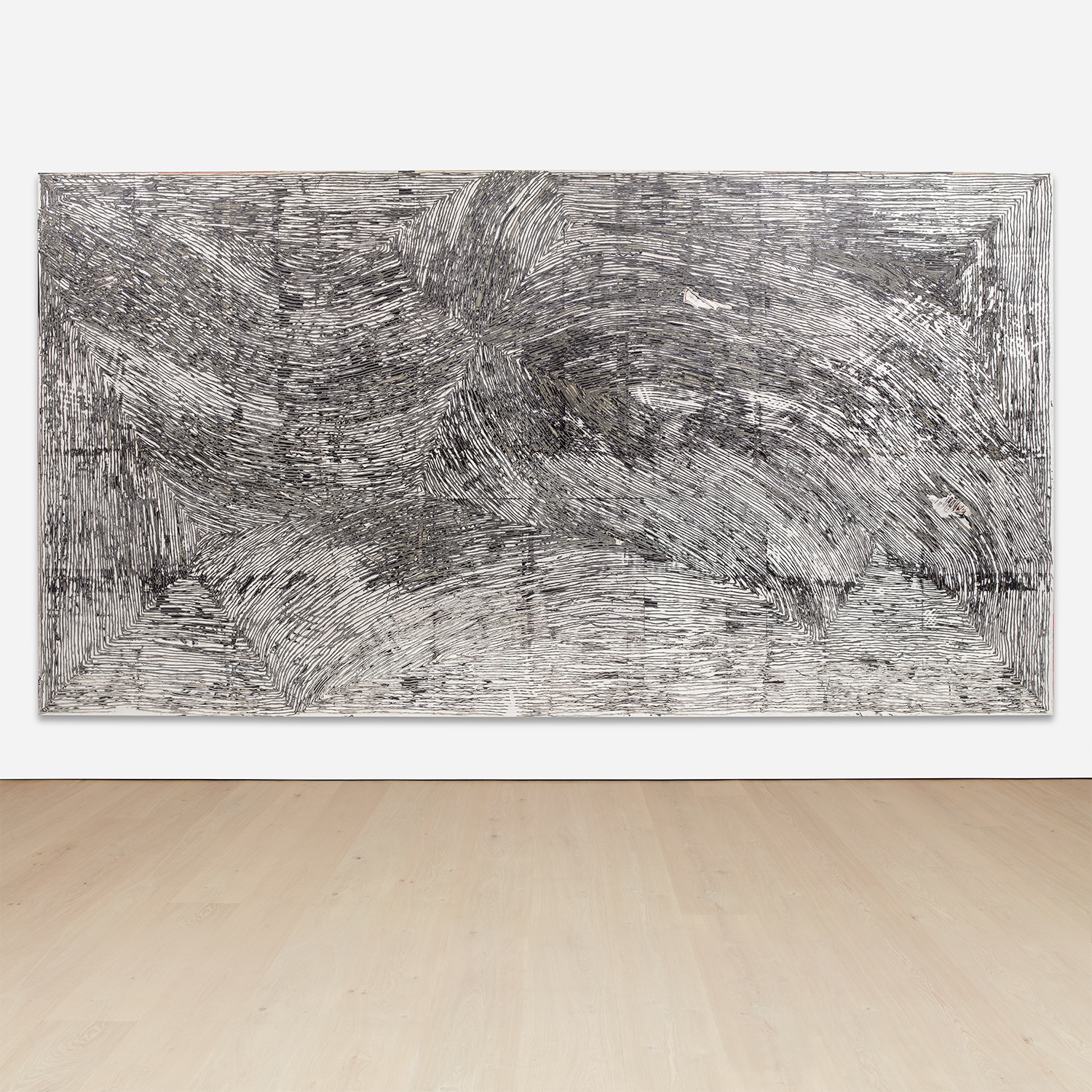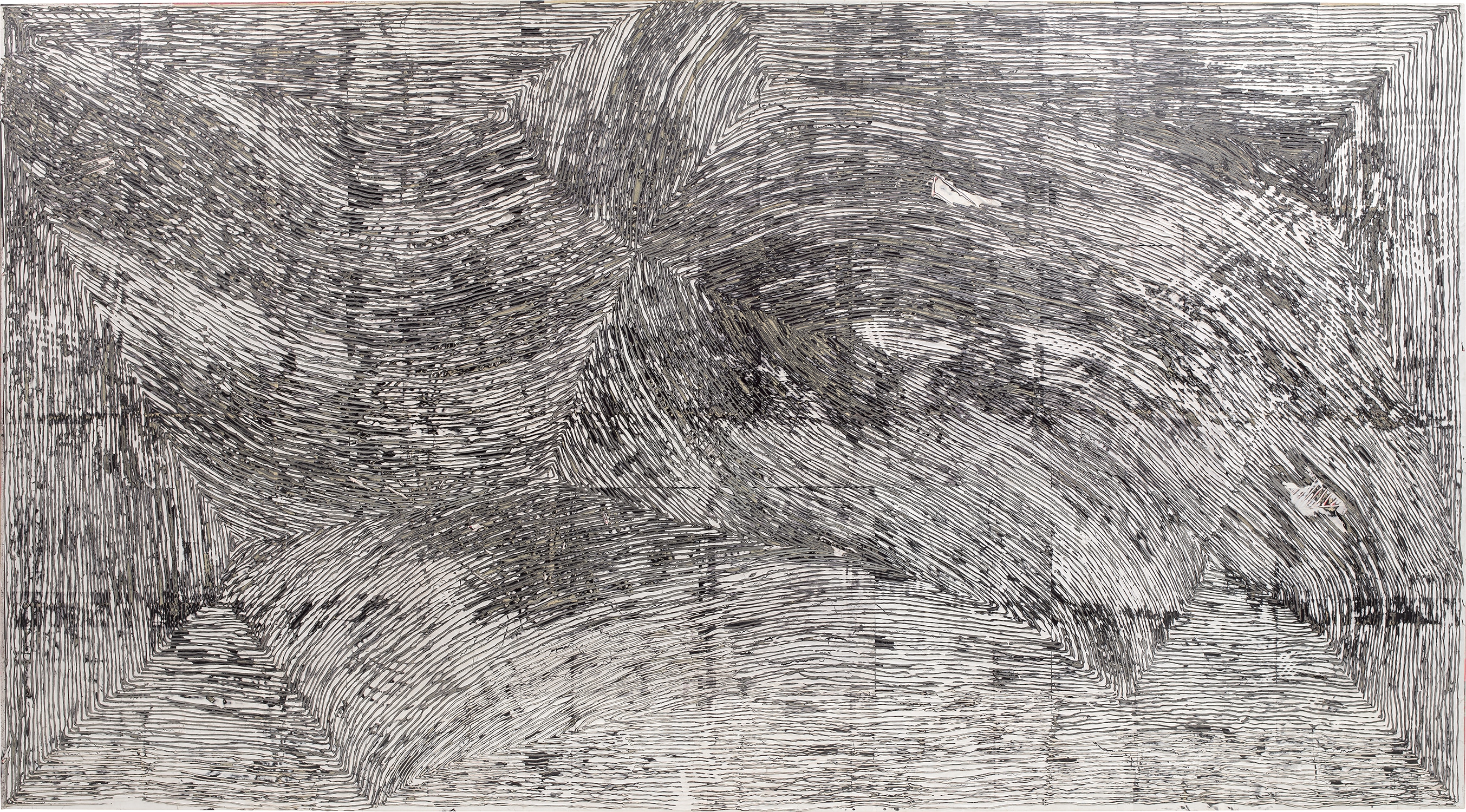





Property from an Important Private Collection
17
Mark Bradford
Nodding Gunpowder
signed, titled and dated ‘Nodding Gunpowder 2013 Mark Bradford’ on the reverse
mixed media on canvas
335.3 x 609.6 cm (132 x 240 in.)
Executed in 2013.